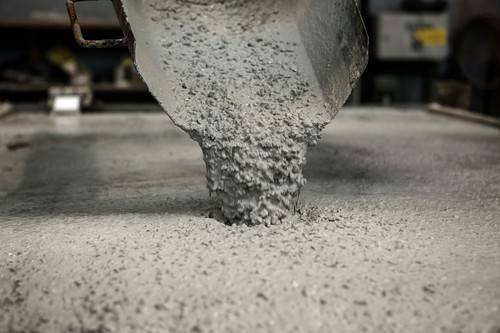Common uses of concrete admixtures include improving workability, increasing or decreasing cure time, and increasing concrete strength. But Admixtures can also be used for aesthetic reasons. We look at 7 common concrete admixtures used today.
Water Reducing Admixtures
Water Reducing Admixtures are also also known as plasticizers.They are further classified into three categories: plasticizers, mid-range plasticizers and super plasticizers. They work to reduce the required water content for a concrete mixture by about 5 to 10 percent. Consequently, concrete containing a water-reducing admixture needs less water to reach a required slump than untreated concrete.
Retarding Admixtures
Retarding admixtures work by slowing the rate of setting of concrete. By slowing the initial setting time, the concrete mixture can stay in its fresh mix state longer before it gets to its hardened form. Use of retarders is beneficial for:
- Complex concrete placement or grouting
- Special architectural surface finish
- Compensating the accelerating effect of high temperature towards the initial set
- and Preventing cold joint formation in successive lifts.
Accelerating Admixtures
Like water reducers and retarders are one of the most popular kinds of chemical admixtures, added to a concrete batch either immediately before or during mixing. Accelerators make concrete set faster, also known as increasing the rate of hydration. At the same time, they promote strength development so it happens earlier in the set time of a slab.
Air Entraining Concrete Admixture
Air Entraining Concrete Admixture works by helping in the formation of fine and stable air bubbles in concrete. When the fresh mixture begins to cure, the bubbles within it become mineralized and become an integral part of it. In this way, an additional space is created inside the concrete structure inside which the freezing water expands. This prevents an increase in internal pressure, which is responsible for the formation of cracks during low temperatures. Even distribution of pores with air in the entire volume of concrete improves its frost resistance.
Damp-proofing Admixtures
Damp-proofing Admixtures are also known as permeability reducing admixtures. The work by resisting penetration of moisture into concrete. Note, that One of the most important requirements of concrete is that it must be impervious to the water.Damp-proofing Admixtures therefore prevent the water penetration of dry concrete or stop the passage of water through unsaturated concrete. But they have no significant effects on setting time of cement and compressive strength of concrete.
Corrosion Preventing Admixtures
Corrosion-inhibiting admixtures increase the passivation of reinforcement and other embedded steel. This can inhibit corrosion when passivation would otherwise have been lost as a result of chloride ingress or carbonation. They are added to concrete during production and are referred to as ‘integral’ corrosion-inhibitors. So-called ‘migratory corrosion-inhibitors’ applied to hardened concrete are not admixtures. Corrosion-inhibiting admixtures can significantly reduce maintenance costs of reinforced concrete structures throughout a typical service life of 30 to 40 years. Although corrosion-inhibitors can raise the corrosion threshold, they are not an alternative to impermeable durable concrete.
Fungicidal, Germicidal, Insecticidal Admixtures
These work by inhibiting the growth of fungi and bacteria on concrete. The commonly used chemicals are:
- polyhalogenated phenols
- dieldrin emulsion
- copper compounds
Also Read
List of epoxy flooring companies in South Africa
Concrete admixture companies in South Africa

